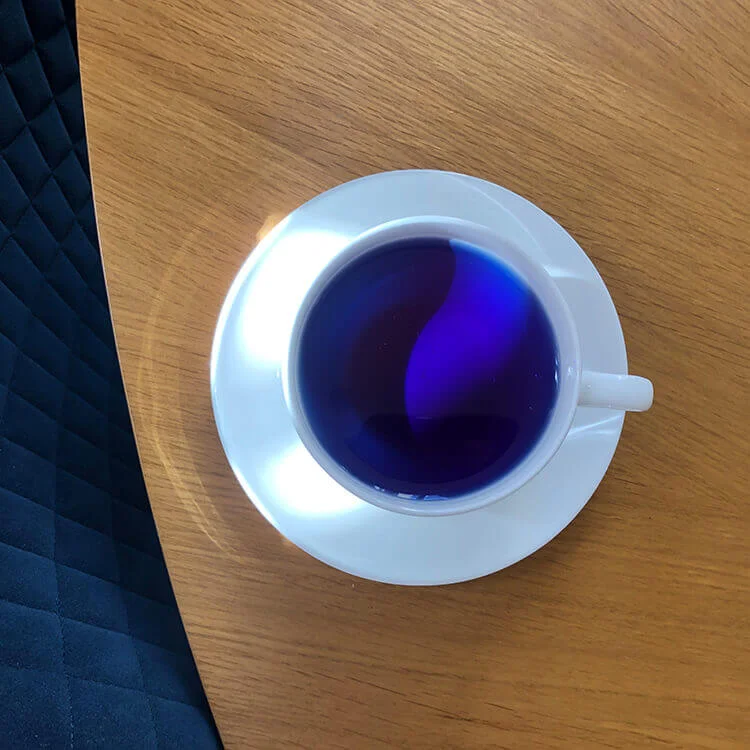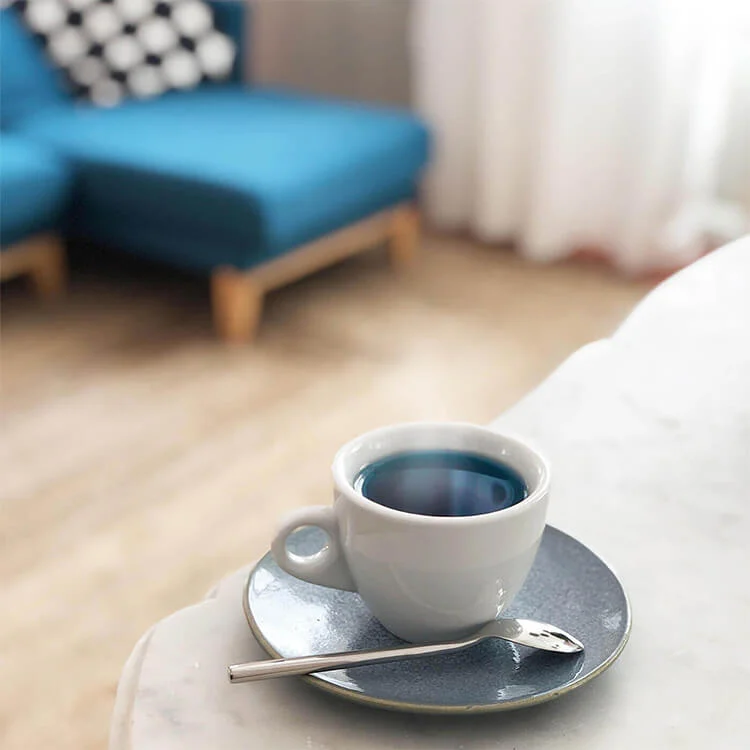Vibrant blue tea protects your teeth without staining them
Summary: Anthocyanins are water soluble and will not stain your teeth due to pH-balancing and anti-microbial properties
Butterfly pea (Clitoria ternatea) tea has been growing in popularity in recent years due to its bright blue colour and numerous health benefits. However, one common concern among consumers is whether the blue pigment in the tea will stain their teeth. The good news is that butterfly pea blue tea does not stain your teeth. In this article, we will explain why.
What makes this herbal tea blue?
First, it’s important to understand that the blue colour of butterfly pea tea comes from the natural pigments found in the butterfly pea flower petals, called anthocyanins. These blue anthocyanins are are potent antioxidants, and give the herbal tea its anti-inflammatory properties. Anthocyanins are intrinsically water-soluble and do not adhere to teeth like other coloured beverages such as coffee, tea, or red wine. This means that the blue pigment from butterfly pea flowers will not stick to your teeth and cause staining.

Other properties of blue tea
Blue tea is naturally low in tannins. Tannins are compounds that can contribute to staining teeth by adhering to the enamel. They’re also responsible for the accumulated brown stain seen in tea cups – a common sight in office kitchens around the world. As butterfly pea tea is low in tannins, it is less likely to cause staining than other teas that have higher levels of tannins, such as black tea.
Another factor that can contribute to staining is the pH level of the beverage. Drinks that are highly acidic (low pH) can erode the enamel of the teeth, making it easier for staining to occur. In fact, a recent comprehensive study published in Frontiers in Dental Medicine (2022) showed that acid attack due to low pH was the dominant factor in the erosion of tooth enamel. By contrast, blue tea has a neutral pH, making it less likely to erode the enamel and cause staining. Furthermore, the antioxidant properties of butterfly pea tea helps maintain a neutral pH in the presence of acids – guarding your teeth from acid attack.

But wait, there’s more! Did you know that butterfly pea has also been show to exhibit anti-microbial properties? Treatment with C. ternatea flower extract slows the biofilm formation of two clinically-important bacteria Streptococcus mutans & Staphylococcus aureus! Both of these bacteria are strongly associated with dental and oral disease.
Drinking blue tea regularly will not stain your teeth. The blue pigment (anthocyanins) found in butterfly pea flowers is water-soluble, blue tea is low in tannins, and it has a neutral pH. Concentrated blue tea extracts also demonstrate a protective effect on your teeth by reducing bacterial production of damaging biofilms. The darker the colour, the more beneficial antioxidants are contained in your cup of blue tea. So, go ahead and enjoy your butterfly pea blue tea as regularly as you like – without worrying about staining your teeth.
Check out our range of Thé Paon butterfly pea tisanes.
Banner image credit : Autumn Goodman





